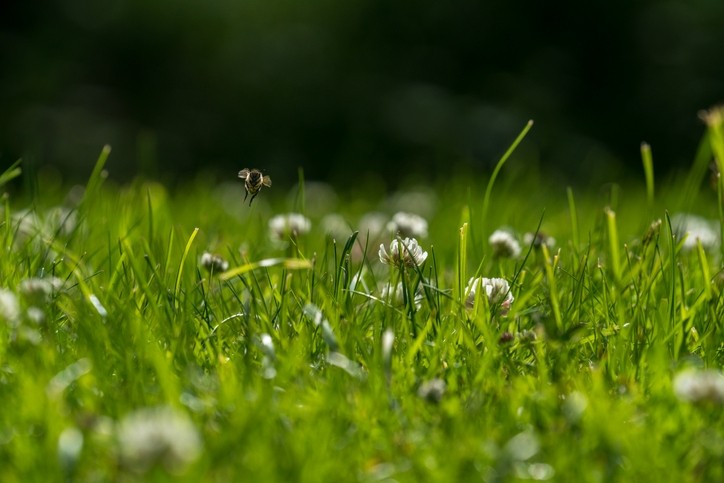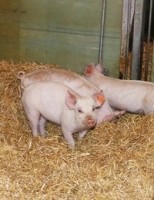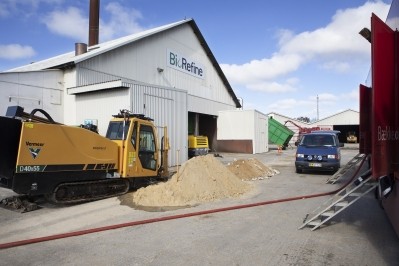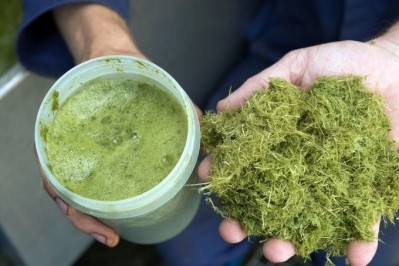Trial: Locally produced grass protein in organic pig diets does not compromise quality, productivity or taste

A feeding trial involving supplementation of organic pig feed with clover grass protein was undertaken at that university last year within the framework of the project, SuperGrassPork.
The results are positive, said the team involved, as the use of protein extracted from clover grass offers significant promise in many ways. "Firstly, it will secure the supply of locally grown protein for the increasing production of organic pigs in Denmark; and secondly, the cultivation of grass will increase productivity in the fields and – at the same time – contribute to reduce nitrogen leaching and pesticide consumption,” said Lene Stødkilde, researcher at that university’s Department of Animal Science.

The clover grass protein was extracted at a minor biorefining plant at AU Foulum. In 2019, a major demonstration plant was built for the extraction of grass protein, which the researchers said makes it possible to supply feed for more extensive feeding experiments in the future.
We spoke to Stødkilde about the research project in March last year, when the trial was still ongoing.
The study
The cohort in the feeding trial included 48 pigs. They were divided into four groups, which were fed three types of feed with different amounts of grass protein as well as a control feed with no clover grass protein – a control, feed with 5% clover grass protein, feed with 10% clover grass protein and feed with 15% clover grass protein.
“The percentages listed above is the amount of protein included in the feed based on weight. For the feed with 15% clover grass protein, this means that the clover grass content actually constituted 41% of the raw protein content of the feed,” explained the researchers.
The feeds were generally composed of barley, wheat, Chinese soya cakes, peas, broad beans and clover grass protein.
The findings
“The results from the feeding experiment demonstrate that the pigs were thriving equally on all types of feeds, as there was no difference as to pigs’ weight, growth, feed intake and feed utilization. This means that feed taste did not affect the pigs’ inclination to eat the feed, and the nutrients were utilized equally for all feed types. In addition, no health problems were observed for any of the groups during the experiment.”
The results, said the team, also showed that the group of pigs on the rations containing 15% clover grass protein had a significantly higher meat percentage compared to the other groups. The higher meat percentage may be because grass protein has a slightly higher digestibility and a more optimal amino acid composition than expected, they said.
“We cannot rule out that the pigs in the 15% feed group were fed more digestible protein and more essential amino acids than we aimed for when we composed the feed mixtures. However, this is good news for our feeds, as a higher digestibility implies that less grass protein is needed in feed in order to achieve excellent growth and meat percentage,” said Stødkilde.
The researchers said their findings also indicated that the more clover grass protein added to the feed, the higher is the omega-3 fatty acid content of the meat. All four groups displayed the same percentage of unsaturated fat, and thus only the relation between omega-3 and omega 6-fatty acids changes in favor of the content of omega-3 fatty acids, they said.
Tasting event
There are also no differences as to taste whether pigs are fed green protein or not, reported the researchers.
A tasting event was run, in cooperation with Danish Crown, that included an “informal” blind tasting of the meat from the trial.
“None of the participants were able to see or taste any differences, a fact that was subsequently confirmed by a professional tasting panel.”
Next steps for the research team will be an optimization of biorefining processes in order to ensure a considerable and stable protein yield of the highest quality, as well as a calculation of costs before implementation, said Stødkilde.
The SuperGrassPork project has been running since 2017 and is set to finish up this year. The initiative is funded by the Danish Ministry of Food, Agriculture and Fisheries backed Green Development and Demonstration Program (GUDP). The project participants include Aarhus University, the University of Copenhagen, Friland A/S, Vestjyllands Andel and the Institute for Food Studies & Agro Industrial Development (IFAU).









